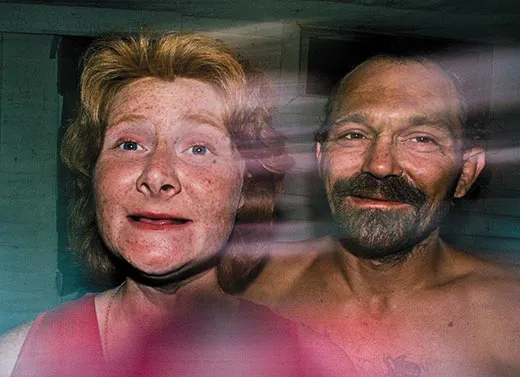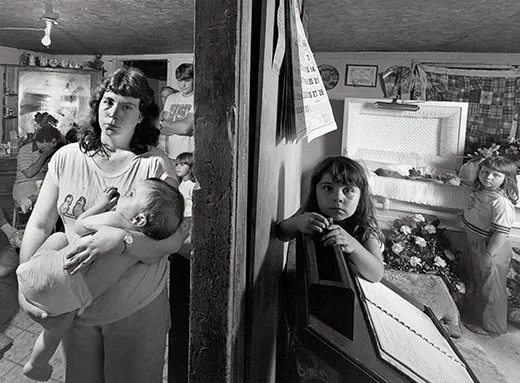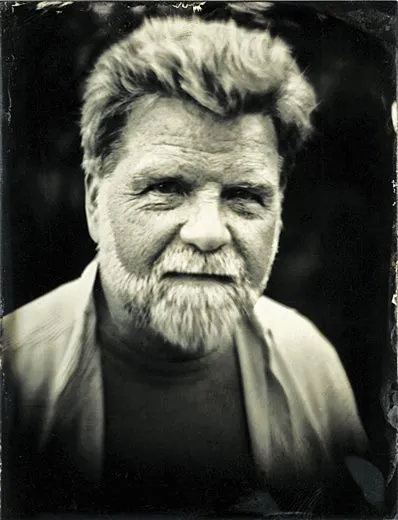Capturing Appalachia’s “Mountain People”
Shelby Lee Adams’ 1990 photograph of life in the eastern Kentucky mountains captured a poignant tradition
/https://tf-cmsv2-smithsonianmag-media.s3.amazonaws.com/filer/Shelby-Lee-Adams-Home-Funeral-631.jpg)
Esther Renee Adams was born on her grandmother’s birthday, June 2, and was named for her, though eventually, after “Mamaw” started calling her “Nay Bug” (because she was scared of ladybugs), everyone else did, too. No granddaughter loved her grandmother more. Mamaw could take the smart out of a wasp sting and hold her own in bubble-gum-blowing contests. She was always game to slice into the Fourth of July watermelon a few days early.
Mamaw died of emphysema in July 1990, when Nay Bug was 7. “Half of me died, too,” she says.
Mamaw was laid out in her own home. In the mountains of eastern Kentucky, such “country wakes” could last for days, as mourners emerged from the coal mines or drove out from the factories. Sometimes so many people showed up, the parlor floor had to be reinforced. Guests paid their respects to the dead, then went into another room for sandwiches, coffee and a long visit.
Not Nay Bug. While people talked outside, “you know where I was?” she asks. “Right there with my Mamaw. I stayed up with her all night.”
And when a man with a camera came and asked to take her picture, she said she wanted to lay a rose across her grandmother’s chest. “He said, ‘Sure, if it’s what you want to do,’ ” Nay Bug recalls. Then he took the picture.
Home Funeral would become one of Shelby Lee Adams’ best-known portraits of Appalachian life.
Adams wouldn’t see Nay Bug again for 18 years. He found her in the summer of 2008 at the head of Beehive Hollow, up a winding road, living in a house without running water or electricity. A coal-black teardrop was tattooed by the corner of her eye. Adams began photographing her again.
For 36 years, Adams has spent his summers in several rural Kentucky counties, watching children grow up, families flourish or fall apart and green mountains crumble after years of coal mining. Coal dust feels omnipresent in Adams’ pictures, which he shoots almost exclusively in black-and-white.
His portraits of “the mountain people,” as he calls them, are intimate, direct and sometimes bleak. Some critics—including those featured in The True Meaning of Pictures, a 2002 documentary film about Adams’ work—say he exploits a region already saddled with stereotypes involving poverty and violence. Adams says he’s capturing a fading culture—home wakes, for instance, are now less common in the mountains—and the faces of old friends. “When [critics] are taken out of their middle-class comfort zone, they are confronted with another person’s humanity,” he says. “And they blame the photographer.”
Adams, 59, has roots in both the mountains and the middle class. He lives in western Massachusetts but was born in Hazard, Kentucky, not far from where he takes his portraits. He is distantly related to Hobart Ison, an Appalachian who in 1967 fatally shot a filmmaker on his land, but Adams’ father was a supervisor for a natural gas company with contracts around the country, and his family often lived in cities, including New York and Miami. When Adams returned to Kentucky for part of each year, he says, his father taught him to look down on the “holler dwellers.”
Then one summer an uncle, a country doctor, introduced him to some of the most isolated mountain families. When Adams went back later, he says, he was mesmerized by their openness before his lens; photographing them would become his life’s work. Today he knows how accents vary from hollow to hollow, who has a sulfurous well, who’s expecting a baby.
The darkness he has sometimes seen in Appalachia only makes him want to look closer. “Within the shadows lie the depth and beauty of human beings,” he says. “Until we understand our own darkness, we won’t understand our beauty.”
His subjects appreciate his presents of canned hams and clothing at Christmastime and the occasional case of beer; they are also eager to see his photographs. “Country people love pictures,” Adams says. Almost every house or trailer has some on display: church and prom portraits, sonograms and sometimes Adams’ work.
But not everyone likes his images.
“I guess I don’t see the point of freezing yourself in time,” says Christopher Holbrook, the baby in his mother’s arms in Home Funeral and now a dimpled 20-year-old in dusty jeans. “The past is supposed to be past.” Chris is the first person in his family to graduate from high school; he has also taken courses in diesel mechanics at Hazard Community College. He recently married and now works as a security guard. No picture, he says, can tell him what his future holds.
Walter Holbrook, Chris’ father and Mamaw’s son, takes a different view. Home Funeral is “something I can show my kids and maybe later on they can save to show their kids what kind of family they had,” he says.
“Somebody said Shelby takes these pictures to make fun of people,” Nay Bug says. “You know what I think? It’s not to make them look bad. It’s the way you look at it. He doesn’t mean to make fun of the poor people. He’s showing how hard it is for us to live.”
She had never seen Home Funeral until Adams visited last summer. She stared at the photograph for a long time. “Now, Jamie, I want you to look at something,” she told her former husband. “Just look right here.” A real teardrop slipped past the tattooed one near her eye. “That’s me.”
Staff writer Abigail Tucker also writes on mustangs in this issue.
Planning Your Next Trip?
Explore great travel deals
Smithsonian magazine participates in affiliate link advertising programs. If you purchase an item through these links, we receive a commission.


